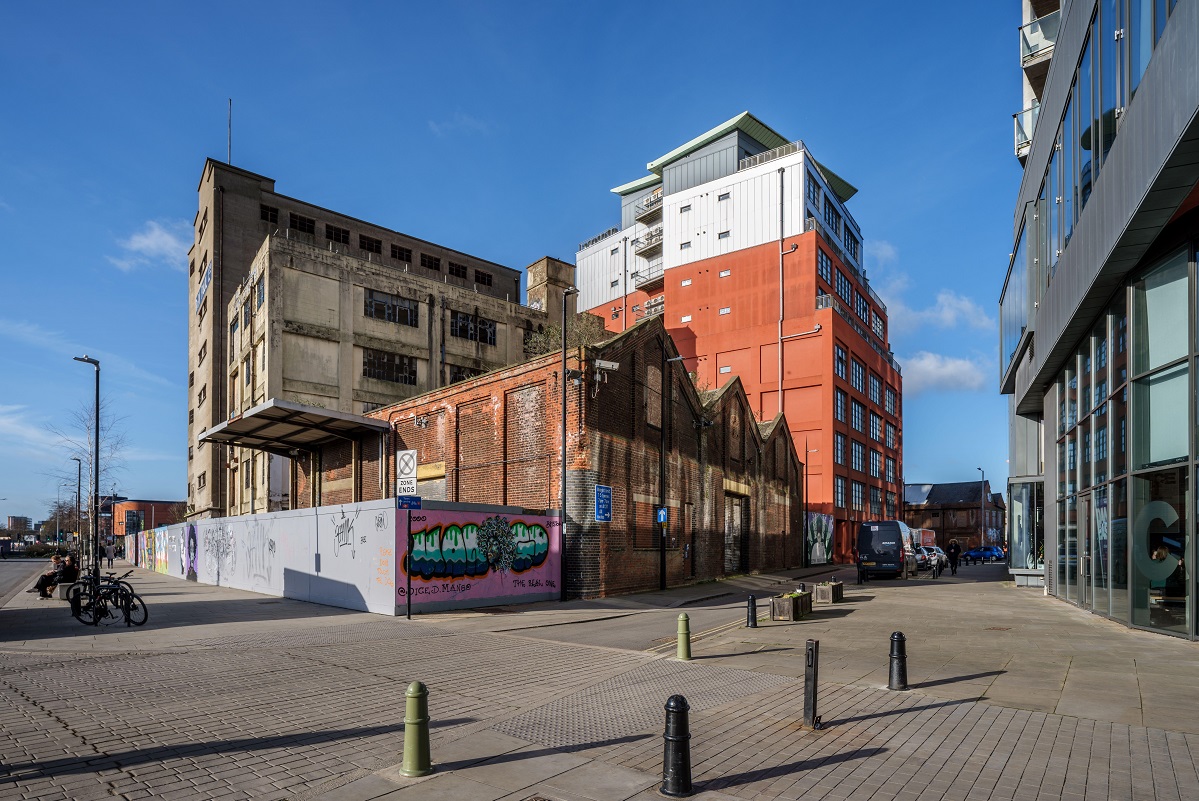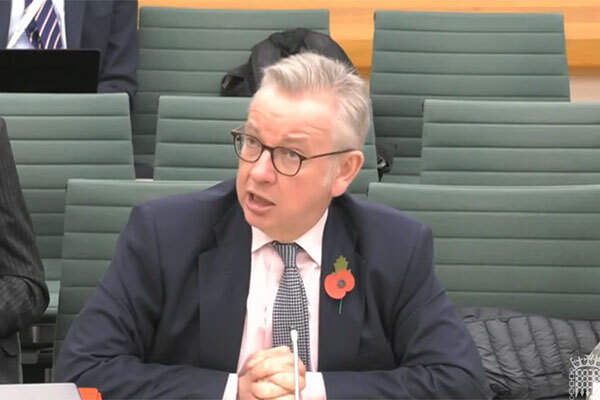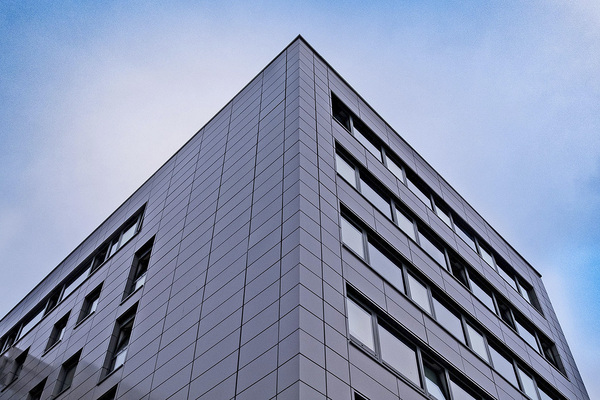Cardinal Lofts development signed off by council despite being non-compliant at time of build, documents show
A block in Ipswich that has seen residents ordered out because of fire safety concerns was signed off by the local authority despite being non-compliant with regulations at the time it was built, documents shared with Inside Housing reveal.

Cardinal Lofts is a nine-storey residential building, constructed as part of a major £75m waterfront project in the city between 2005 and 2010.
This week, the building was fully evacuated after the fire service served a prohibition notice on remaining residents this week.
Residents have now shared a report into the building with Inside Housing, dated November 2020, which reveals that the property was non-compliant with regulations and guidance from the moment it was built.
In the aftermath of the Grenfell Tower fire, thousands of buildings around the country have been deemed in need of remediation because of the use of combustible materials in the external wall.
For some, this is despite having been compliant with the government’s official guidance at the time they were built – such as those that are below 18 metres tall or that feature combustible balconies or windows or using ‘Class 0’ rated cladding panels.
But the report into the system at Cardinal Lofts reveals that the materials in its external wall were not compliant with the rules even when built, but were still signed off by local authority inspectors.
The property has different cladding systems at various heights. These include insulation rendered directly onto the walls of the building on the lower floors and a rainscreen system for the top three.
The rendered insulation on the lower floors use highly combustible expanded polystyrene, which has a ‘Class F’ rating – the lowest alphabetical fire grade – indicating that it is highly combustible.
Higher floors use non-combustible stonewool insulation, but also include combustible timber battens.
However, the top three floors use a metal rainscreen cladding system, which includes Kingspan Thermapitch TP10 insulation, made from a plastic called polyisocyanurate (PIR). This is a ‘Class E’ material, described in the report as “highly combustible”.
The report says this system “has significant quantities of combustible insulation”.
“This wall type is not compliant with current building regulations guidance nor the guidance at the time of construction,” it adds.
Further documents seen by Inside Housing show that the property was signed off by an inspector at Ipswich Borough Council in January 2010.
A signed certificate of completion confirms that “as far as the local authority has been able to ascertain the substantive requirements of the building regulations are satisfied”.
Documents released by the Grenfell Tower Inquiry show that the same inspector who is named on the certificate later emailed central government official Brian Martin in 2013 to specifically enquire about the use of combustible Kingspan PIR insulation on high rises, albeit in relation to a different project.
Mr Martin forwarded the email to a colleague, who said they would get back to him. “Cool beans,” Mr Martin wrote. “The [guidance] needs to be read two or three times to find out what it means.”
He replied to Mr Turner several days later to tell him it did not meet the guidance.
The firm that built Cardinal Lofts was liquidated in May 2017, with the freehold sold to Grey GR – a wholly owned subsidiary of Railpen, the pension scheme for around 500,000 railway workers, with £37bn of invested assets.
Grey GR has become a major player in the building safety crisis, with various blocks in its portfolio requiring remediation work.
As well as Cardinal Lofts, it owns the Taper Building in south London, where residents are seeking legal action, and Vista Tower in Stevenage where the government is taking it to court.
Alex Dickin, a former resident at the building who now rents out his apartment, said: “Our frustration with this is that even though the detail in this report is from November 2020, we’re now sitting here in March 2023, and the building hasn’t been fixed.
“If they [Grey GR] engaged with us in early 2021 shortly after the discovery, we would have gladly worked with them to chase after the original developer.
“But now we’ve been dragged through hell for the last three years, they should fix it or they should get around the table and discuss demolition and compensation for every leaseholder.
“They’ve sat on this issue while the government debates how to fix it, hoping the solution will work out in their favour.”
As well as its external wall defects, the building has communal fire doors that have failed tests, serious internal compartmentation issues and missing or defective cavity barriers.
The fire and rescue service had issued a prohibition notice covering the top three floors – where the most combustible cladding is located – but Grey GR had asked residents in the rest of the building to leave as well.
Several had declined and remained in the building, before a further prohibition was issued this week forcing them to leave.
The Kingspan insulation used on Cardinal Lofts differs from its flagship ‘K15’ phenolic foam, a small amount of which was used on Grenfell Tower. Unlike K15, Thermapitch TP10 has never been part of a system that has passed a large-scale test, nor has it been marketed for use on high-rise buildings.
A spokesperson for Ipswich Borough Council said: “Investigations into the structure of the building are ongoing and until the outcome is known it is not appropriate for the council to comment.”
A spokesperson for Grey GR added: “Since the original external fire safety risks at Cardinal Lofts were identified, Grey has conducted a variety of surveys, in line with recommended procedures, each of which has provided more detail regarding the property’s issues.
“The latest report to be carried out, the Type 4 Compartmentation survey, is the most intrusive so far as it expanded investigations into individual apartments.
“These new findings concluded that the condition of compartmentation throughout the building is inadequate – due to the poor standard of redevelopment by the original developers.
“Consistent with recommended procedures, these highly detailed and intrusive surveys would not have been done as part of the acquisition of the freehold by Grey, or indeed by leaseholders upon purchase.
“Grey is fully committed to remediating Cardinal Lofts and to return residents to safe homes, and these issues are being uncovered as a result of ongoing and active assessments and works at the property.
“This building is extremely complex and we have to ensure all of the necessary investigations have been conducted before finalising our remediation plans. Our priority is to ensure resident safety and we want to have residents back in safer homes as soon as possible.”
Update: at 1pm on 17.3.2023
An original version of this story said Mr Martin did not reply to Mr Turner’s email. It was subsequently pointed out to Inside Housing that there was a reply in a separate email chain. The story was updated accordingly.
Sign up for our fire safety newsletter
Already have an account? Click here to manage your newsletters











